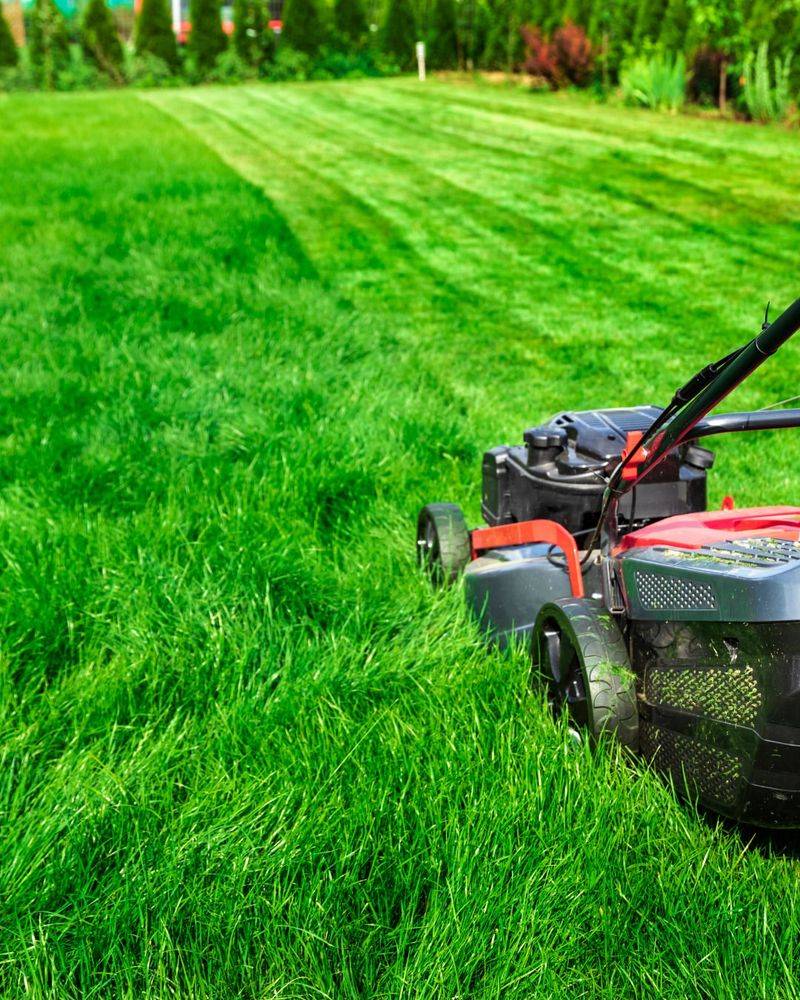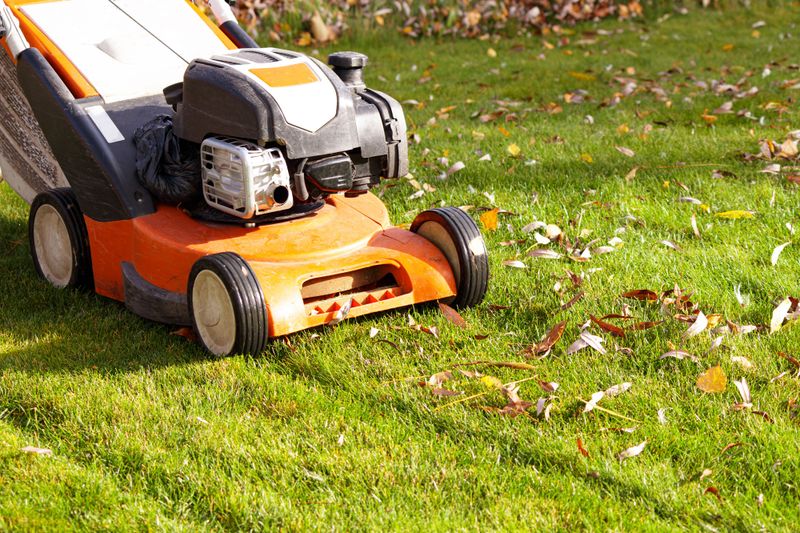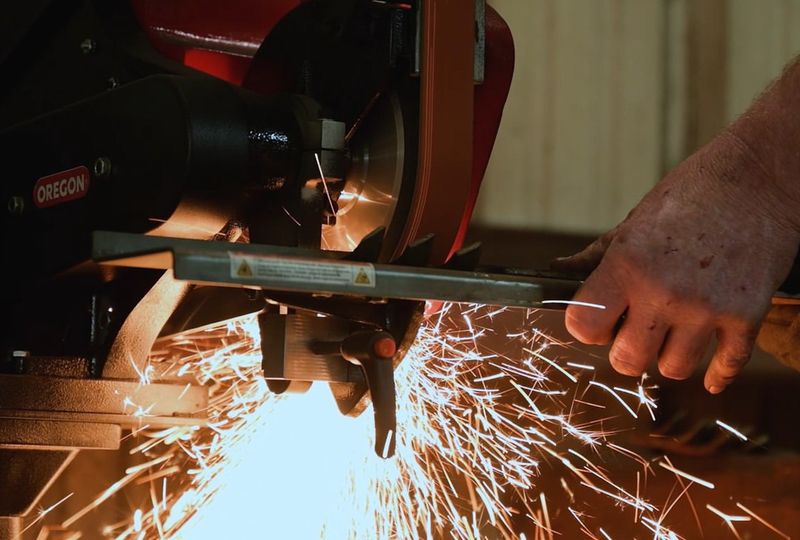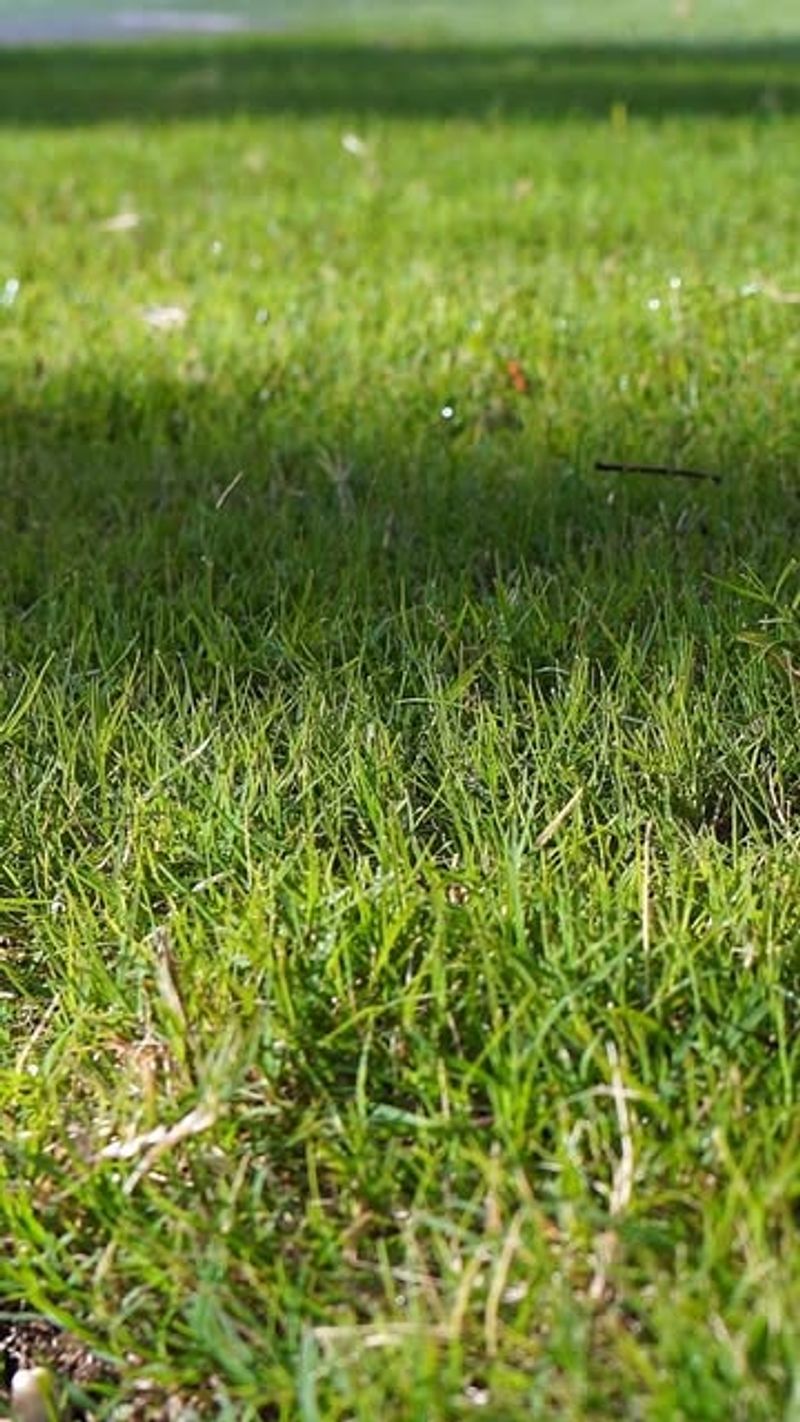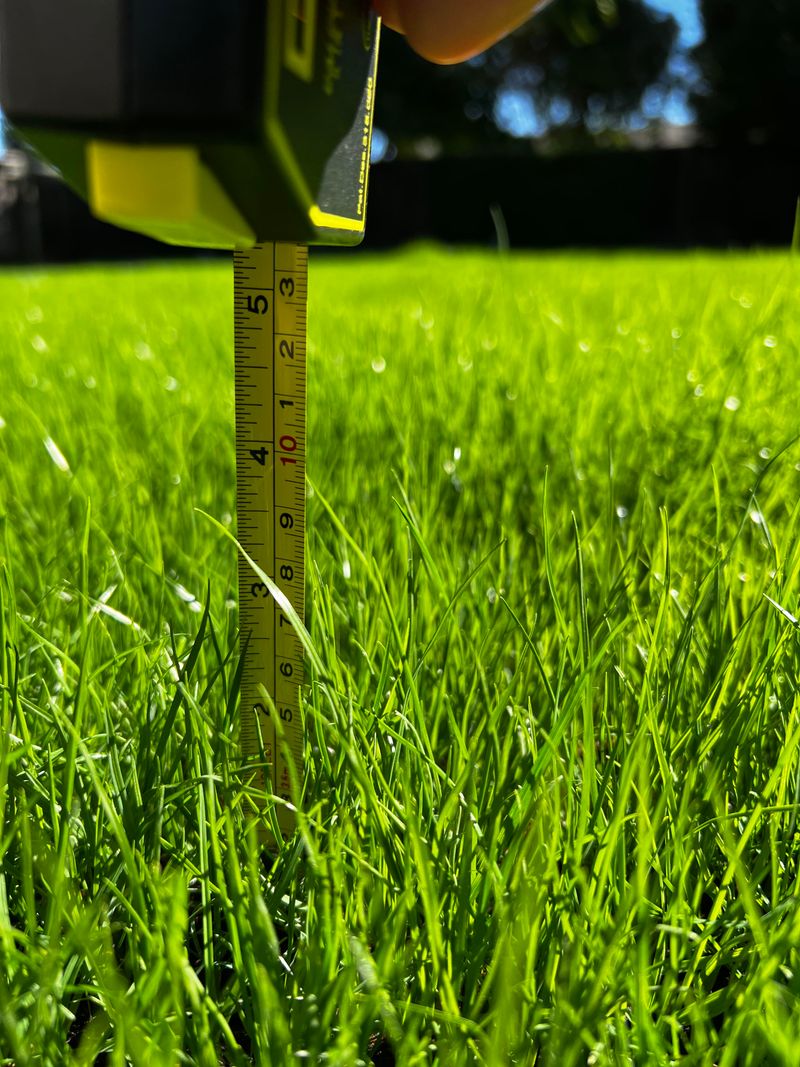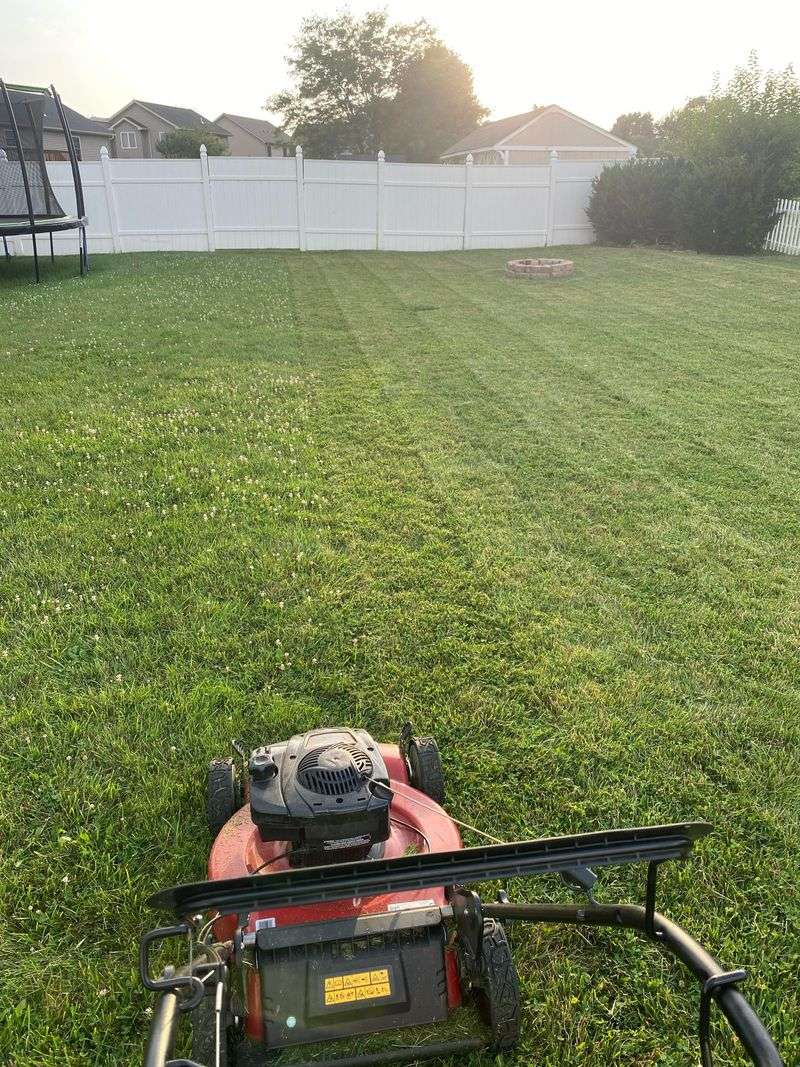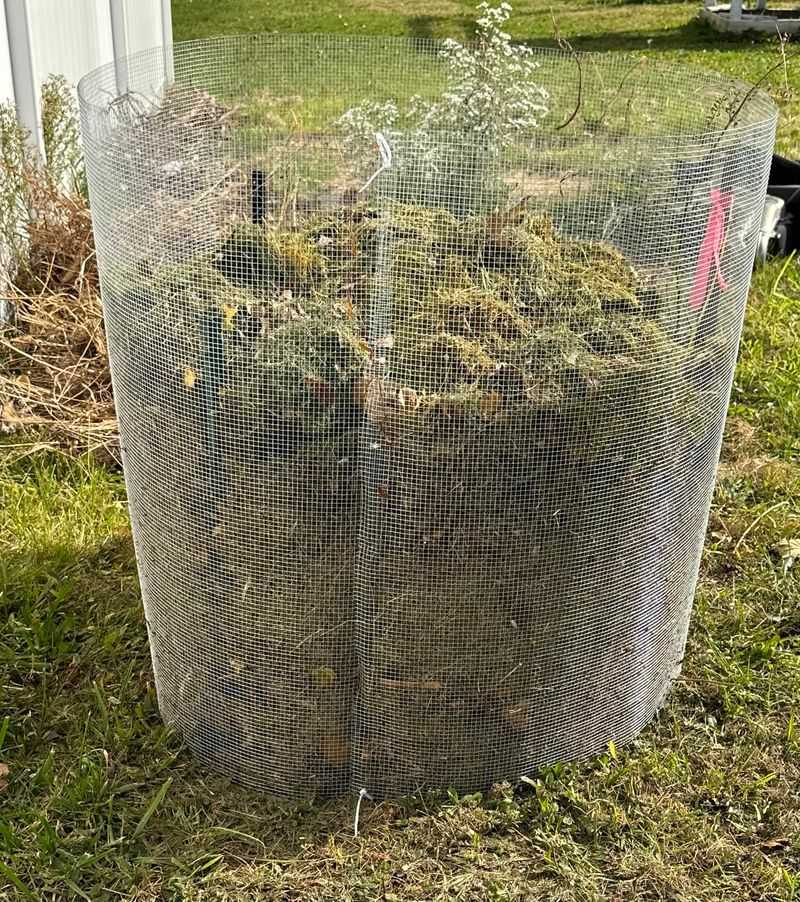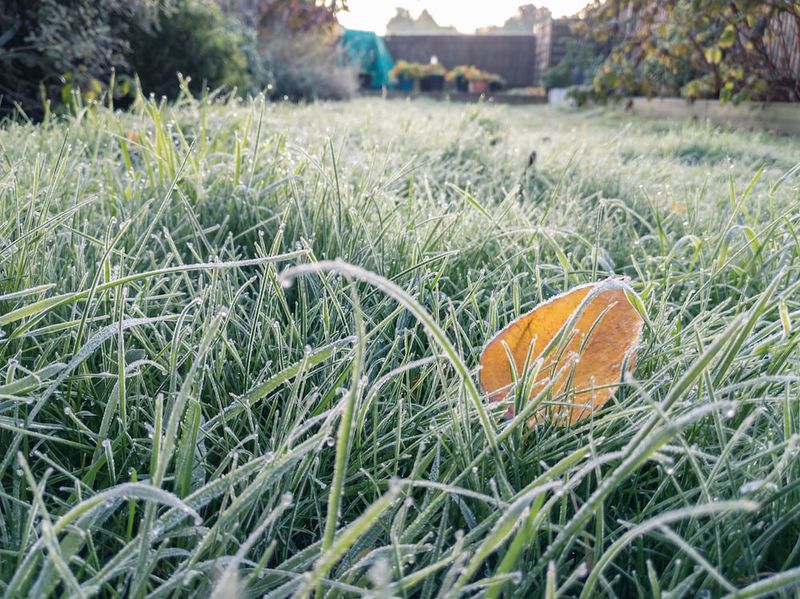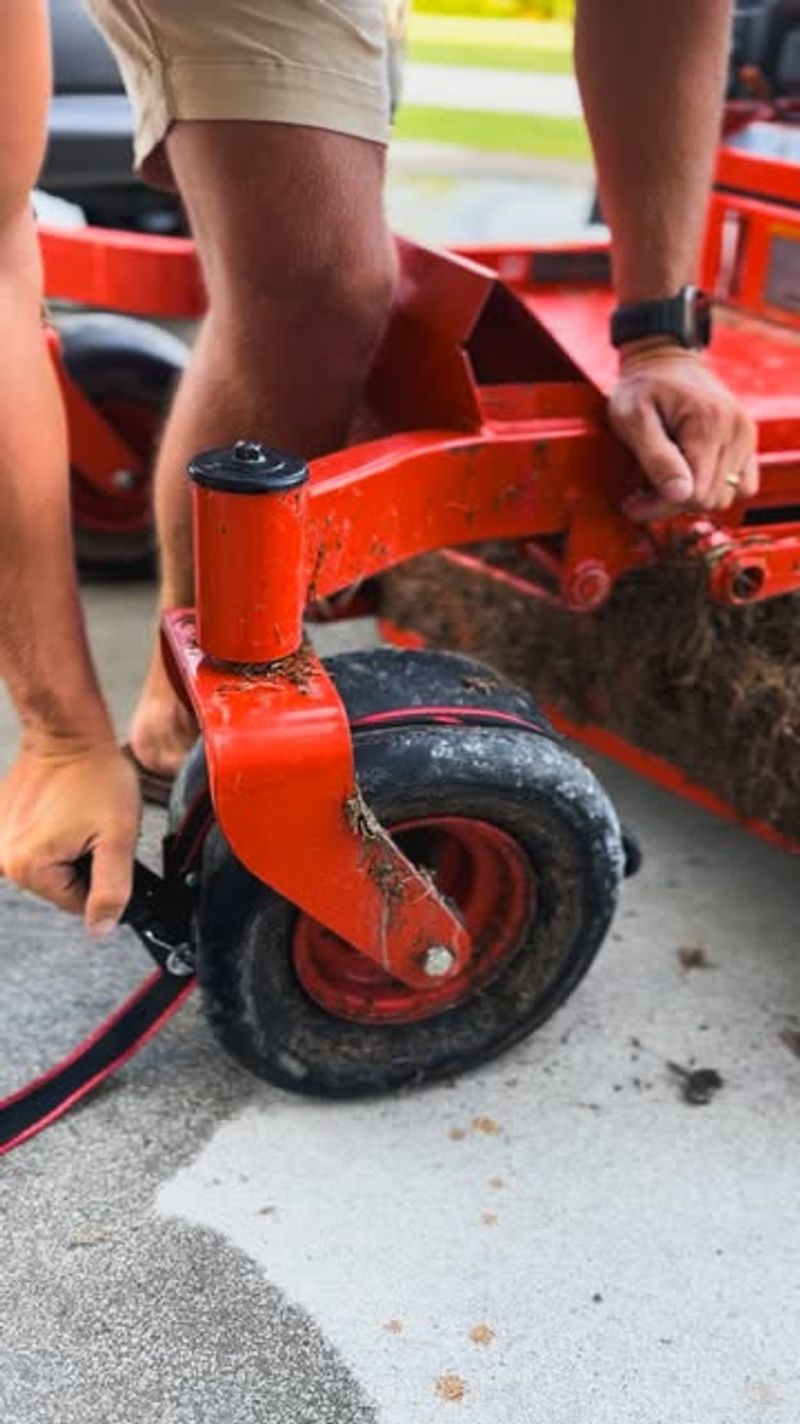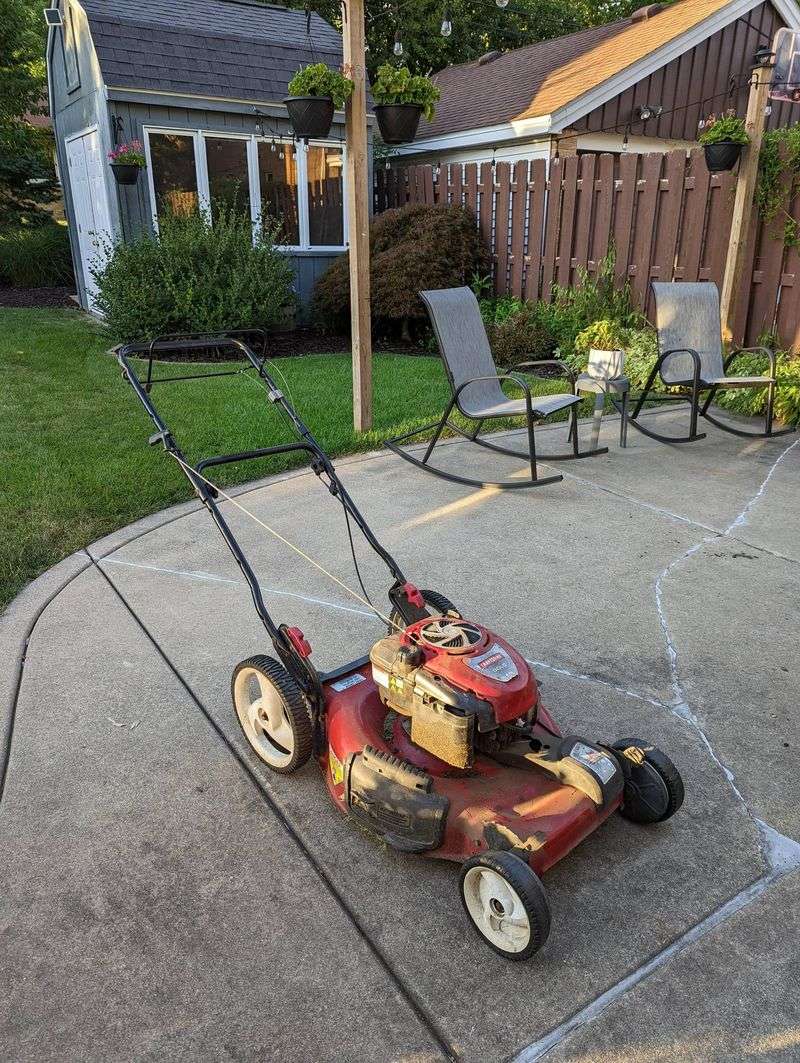November in Arizona brings a welcome break from the heat—and a new approach to lawn care. Cooler temps mean your grass needs different attention than it did during those blazing summer months.
Mowing rules shift with the season, and getting them right can make a big difference. It’s the key to keeping your yard healthy, green, and free from costly issues down the road.
I’ve found that a few smart adjustments now can save you time and money later. With the right care, your lawn can stay beautiful all season long—even in the desert.
1. Adjust Your Mowing Height For Cooler Weather
Cooler November weather means your grass grows slower and needs a different cutting approach. Raise your mower blades to leave grass about three inches tall instead of the shorter summer cuts.
Taller grass protects roots from temperature drops and helps retain moisture better. Your lawn will look fuller and healthier when you give it this extra length during fall months.
Most mowers have easy adjustment levers that take seconds to change.
2. Mow Less Frequently As Growth Slows Down
Your grass practically takes a vacation in November compared to summer growing patterns. Instead of weekly mowing sessions, you might only need to cut every ten to fourteen days.
Watch your lawn rather than following a strict schedule to determine when it actually needs trimming. Grass that grows less than an inch since the last cut can wait a bit longer.
Reducing mowing frequency saves fuel, equipment wear, and your valuable weekend time for other activities.
3. Keep Blades Sharp For Clean Cuts
Dull blades tear grass instead of cutting it cleanly, leaving ragged brown edges that make your whole lawn look unhealthy. Sharp blades slice through each blade of grass like scissors through paper.
November is perfect for sharpening or replacing mower blades since you mow less often anyway. Clean cuts help grass heal faster and resist disease better during temperature fluctuations.
Professional sharpening costs around fifteen dollars, or you can learn to do it yourself at home.
4. Mow When Grass Is Completely Dry
Wet grass clumps together and clogs your mower while creating uneven cuts across your entire yard. Morning dew or irrigation moisture needs time to evaporate before you start mowing.
Wait until mid-morning or afternoon when grass blades stand upright and dry. Dry conditions give you cleaner cuts and prevent your mower from working harder than necessary.
Wet clippings also stick to mower decks and promote rust, shortening your equipment’s lifespan significantly over time.
5. Follow The One-Third Rule Every Time
Never remove more than one-third of the grass blade height in a single mowing session, no matter how overgrown your lawn looks. Cutting too much at once shocks grass and weakens its ability to photosynthesize properly.
If your lawn got away from you, mow it twice over several days instead of scalping it once. Gradual trimming keeps grass healthy and prevents ugly brown patches from developing.
This rule applies year-round but becomes especially important during November’s transitional weather.
6. Change Your Mowing Pattern Regularly
Mowing in the same direction every time creates ruts in your soil and trains grass to lean one way. Your lawn develops an uneven appearance and compacted soil in high-traffic wheel paths.
Switch between horizontal, vertical, and diagonal patterns each time you mow. Alternating directions encourages grass to grow straight up and distributes wear evenly across your entire yard.
Your lawn will look professionally maintained with this simple technique that costs nothing extra to implement.
7. Leave Clippings On The Lawn For Natural Fertilizer
Grass clippings contain valuable nutrients that feed your lawn naturally when left behind after mowing. They decompose quickly and return nitrogen to the soil without any extra work from you.
Bagging clippings wastes time and removes nutrients your grass needs, especially during November when growth requires steady nourishment.
Mulching mowers chop clippings finely so they disappear into the lawn within days. This free fertilizer reduces your need for chemical treatments throughout the year.
8. Avoid Mowing During Extreme Temperature Drops
November occasionally brings unexpected cold snaps that stress grass already adjusting to seasonal changes. Mowing during or right after temperature drops adds extra stress that weakens your lawn.
Check weather forecasts and skip mowing if temperatures dipped below forty degrees recently. Stressed grass needs recovery time, and cutting it forces the plant to use energy for healing instead of root development.
Patience during cold periods pays off with healthier grass when warmer days return to your area.
9. Watch For Frost Before Morning Mowing
Frost makes grass brittle and vulnerable to damage from mower wheels and blades rolling across frozen blades. Walking or mowing on frosted grass breaks cell walls and creates brown footprints or tire tracks that last for days.
Wait until frost completely melts and grass warms up before starting any lawn maintenance activities. Mid-morning usually provides safe conditions once the sun has warmed your yard thoroughly.
Protecting grass from frost damage keeps your lawn looking green and healthy throughout November.
10. Clean Your Mower After Each Use
Grass clippings stuck to your mower deck hold moisture that promotes rust and corrosion on metal parts. November’s reduced mowing schedule makes it easier to maintain this important cleaning habit.
Scrape the underside of your deck after every mowing session while the grass is still fresh and easier to remove.
A clean mower cuts better, lasts longer, and prevents spreading lawn diseases between different areas. Five minutes of cleaning saves hundreds of dollars in premature equipment replacement costs down the road.
11. Maintain Proper Tire Pressure For Even Cuts
Uneven tire pressure causes your mower deck to tilt slightly, resulting in scalped strips and uncut patches across your lawn. Most people never check their mower tires until they notice cutting problems.
Inspect tire pressure monthly and inflate all tires to manufacturer specifications found in your owner’s manual. Even pressure ensures your mower sits level and delivers consistent cutting height everywhere.
This quick check takes two minutes but makes a dramatic difference in your lawn’s finished appearance after mowing.
12. Prepare Your Mower For Winter Storage
Late November signals the right time to start thinking about winter maintenance for your mowing equipment. Add fuel stabilizer to prevent gas from gumming up your carburetor during storage months.
Change the oil, replace spark plugs, and clean or replace air filters before putting your mower away. Proper preparation means your mower starts easily next spring without costly repairs or service calls.
Spending thirty minutes on maintenance now saves frustration and expense when mowing season returns to Arizona.


